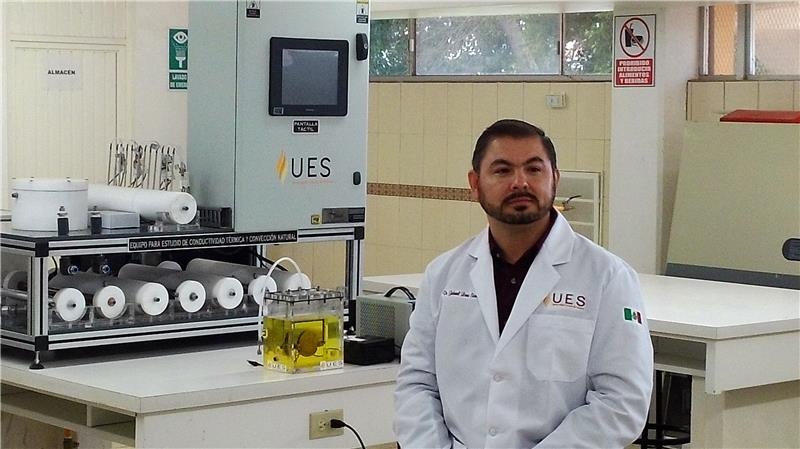Sep 15 2016
 Gabriel Luna Sandoval (Credit: UES)
Gabriel Luna Sandoval (Credit: UES)
On average, a healthy human body generates 1.4 liters of urine per day, which is composed of the body’s waste substances. Scientist, Dr. Gabriel Luna Sandoval, from the State University of Sonora (UES) has produced a biofuel supply device that uses human excretion to produce electricity and power domestic stoves.
The researcher experimented with liquid in a cell usually containing hydrogen obtained from water. This invention has earned the San Luis Rio Colorado-based researcher a patent. Seven Mexican businesses and two foreign businesses have also offered to industrially produce the device.
Dr. Luna Sandoval, a mechanical engineer from the National Polytechnic Institute, earned his doctorate on Renewable Energy for Space Applications from the Polytechnic University of Catalonia in Barcelona. The researcher states that a liter of biogas can be produced from five liters of urine, so a family of three could produce a week’s worth of hydrogen required as fuel, with urine.
Electrochemical electrolysis process is used to obtain the hydrogen. The process involves storing urine in 20 cm2 cells, and 12-volt photovoltaic energy (energy from the sun) is passed through two electrodes and the energy is stored in the battery for use when the need arises. A molecule from urea and one from water are obtained and they serve as fuel. Two oxygen molecules and six hydrogen molecules are obtained from water.
At first it was not easy because in electrolysis urine does not behave like water because it contains salts and organic solids that adhere to the electrodes of the cell and make it difficult to carry out the process. Urine is a natural electrolyte, has organic compounds, and therein lies the difference.
Dr. Luna Sandoval, Mechanical Engineer, National Polytechnic Institute
Various tests were conducted to obtain hydrogen from water. The device, which was patented in March 2016, was developed after various modifications were made and the right amount of urine was used.
The next step involves the development of a practical and portable device, the size of a small suitcase that can be carried around and easily used for different purposes at home. The researcher stated that he and his team are currently working on developing a similar device that can be used to fuel cars, but it will take a while to achieve this. "
We have under construction a cell but not with stainless steel electrodes but with a more expensive material, which requires further tests", says the specialist.
Taking about his experience at the Match Innovation Forum, organized by the Kappa Knowledge Center S.C and held in Guadalajara in April 2016, Dr. Luna Sandoval said "I've had the opportunity to see similar events outside the country and not conceived for Mexico. But see that came true, with the exchange of information among young participants, the links were very valuable treatment and researchers predicts that the next event will be a guaranteed success”.